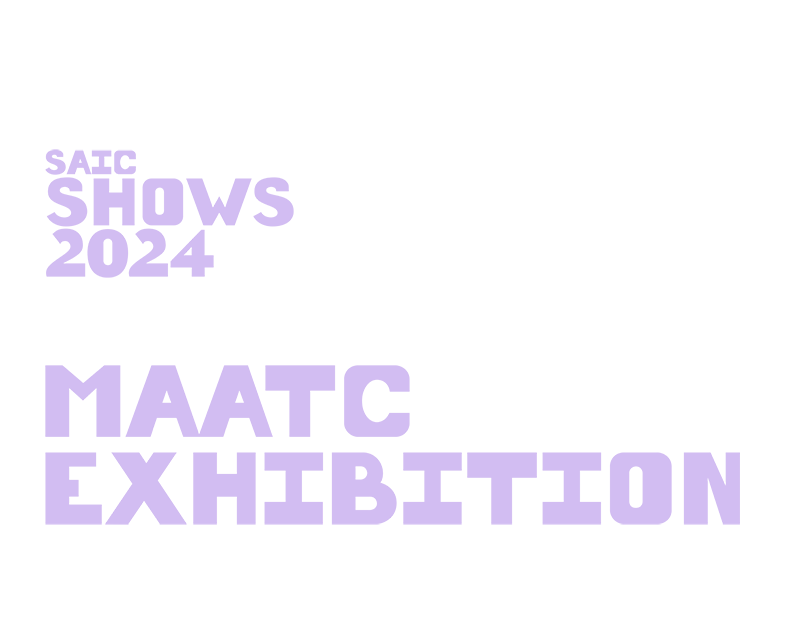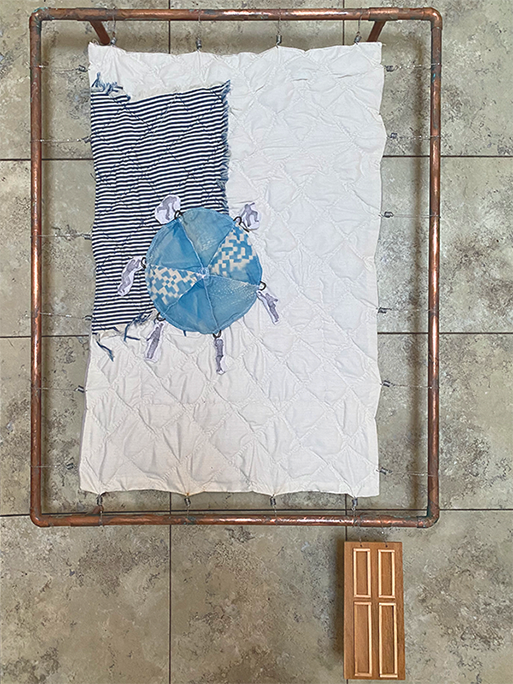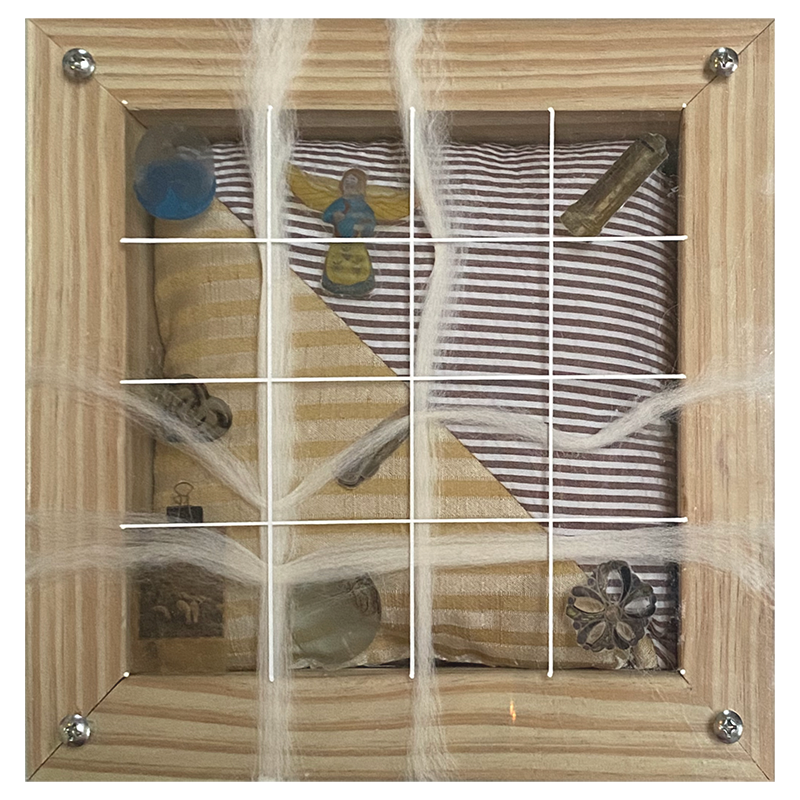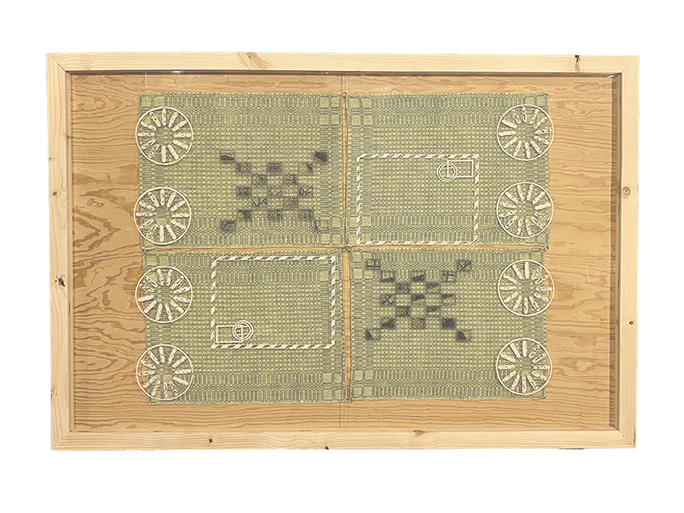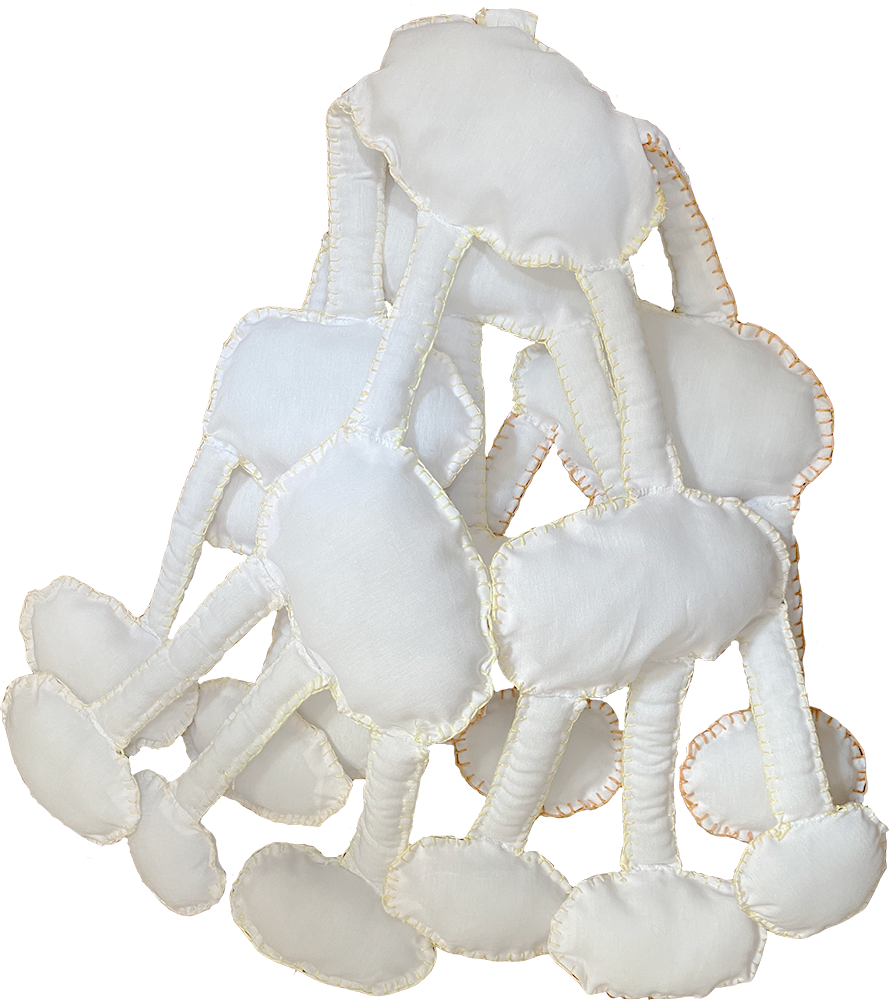Molly Sheffield was born and raised on the Northside in Chicago, IL. Molly studied Studio Arts and Psychology at Oberlin College and graduated in 2020, but returned to pursue her MA degree in Art Therapy and Counseling at SAIC to stay and practice in the community she grew up in. Molly currently works at a therapeutic day school in the north suburbs called New Connections Academy/South Campus and Central Baptist Village, a retirement community, practicing as an art therapy extern who focuses on empowerment through collaboration and material exploration. Molly uses this material exploration in her art practice as she is an interdisciplinary artist who uses book-making, printmaking, fiber arts, and sculpture in her practice. Her art works to examine the formation of memories and perceptions on a personal, intergenerational, and cultural level.
My body of work consists of reflective work about experiences of art-based collaboration and its effect on my self-criticism. Based on my reading, my reflective art-making, the collaborative experiences themselves, and my fieldwork experiences, I have found that collaboration can be used as a tool for working through self-criticism by addressing the vulnerability present at the beginning of the relationship in collaboration. The work itself is meant to contribute to my understanding and possibly lessening of my self-criticism, by opening myself up to new people and new ideas. The goal of the exhibition is to share my personal experience with collaboration, as well as give viewers resources to bring collaboration into their own lives.
The reflective work I have made uses a plethora of different materials and media to reflect upon my experience of collaboration within my research. The found objects give way to my inherent understanding of collaboration in our everyday life such as eating/cooking with one another and working with one another to make something. The imagery alludes to themes such as hierarchy and the experience of silence. The built material in the pieces creates structures that mimic beds and tables, places of comfort to return to, to elicit the sense of increased comfort I am walking away with from these experiences. The material processes, such as patina and cyanotype show material transformation, mimicking the transformation that occurs in collaboration with the collaborators. The artistic influences of my works are contemporary artists who inspired the collaborative directives that my pieces reflect on. These are groups such as the Fluxus group, with their emphasis on the importance of the everyday, often taking form through found objects, and the New York Correspondence School whose aesthetic and motive for creating an artistic community are important to my work. Both of these groups worked against a bourgeois society that decided a value for art. Each group pushed for connection in resistance to an elitist art world based on othering. Particular instances in my work that process this self-criticism are moments that show shifts in hierarchy through symbolism such as the parachute in Transformation, which I used because it is an object that needs to be pulled from each direction to work. In the collaboration that inspired this imagery, there was a shift in hierarchy to a more equal point, despite the supervisor, supervisee nature of the relationship in the way that we both had to participate equally in the collaboration. My shift in self-criticism is also highlighted in Finders Keepers through the usage of layers representative of moments of solidified connection. The more you reveal yourself and your vulnerabilities, the more layers of connection come about deepening a relationship. I hope that interacting with these pieces will open up a conversation about collaborations in everyday life as a way to process self-criticism.
My work before this research existed mostly in the realm of memorializing and understanding the complexity within memory and this inherently came up in this work as my collaborations were memorialized through my reflective work. I will return to these feelings every time I view these pieces, which will likely exist in my personal archive. By sharing my experiences with self-criticism, I hope there is some honesty shared with the viewers and encourages them to think about how self-criticism sits within their lives. My current art therapy practice is based on people getting out of their comfort zone by pushing themselves in art. Every time I ask myself and others to make art, I acknowledge the difficulty of the task because of the aesthetic pressure of society, but also because of art’s connection with our vulnerabilities and our personal stories. As I create art and continue to collaborate within my art-making practice, I hope to continue to be honest about these vulnerabilities and self-criticism. In the future, I will continue to incorporate collaboration within my work as an artist and art therapist.
